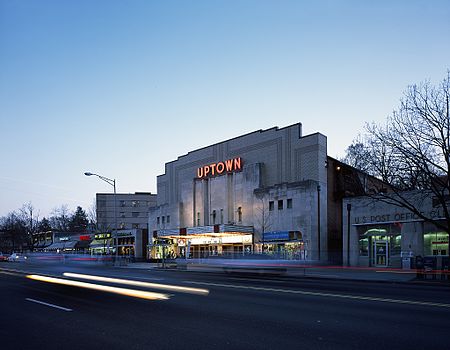Uptown Theater (Washington, D.C.)
1936 establishments in Washington, D.C.Art Deco architecture in Washington, D.C.Cinemas and movie theaters in Washington, D.C.Cleveland ParkLandmarks in Washington, D.C. ... and 2 more
Theatres completed in 1936Use mdy dates from March 2020

The Uptown Theater, known as The Uptown (formerly Cineplex Odeon Uptown or AMC Loews Uptown 1), was a single-screen movie theater in the Cleveland Park neighborhood of Washington, D.C. Opened in 1936, it hosted the world premieres of such movies as 2001: A Space Odyssey and Jurassic Park. It closed in March 2020.Its screen was the largest commercial movie theater screen in the DC Metro area outside of the Smithsonian Institution. The building was listed on the National Register of Historic Places in 2022.
Excerpt from the Wikipedia article Uptown Theater (Washington, D.C.) (License: CC BY-SA 3.0, Authors, Images).Uptown Theater (Washington, D.C.)
Connecticut Avenue Northwest, Washington Cleveland Park
Geographical coordinates (GPS) Address External links Nearby Places Show on map
Geographical coordinates (GPS)
| Latitude | Longitude |
|---|---|
| N 38.9349 ° | E -77.0585 ° |
Address
Connecticut Avenue Northwest 3426
20008 Washington, Cleveland Park
District of Columbia, United States
Open on Google Maps








